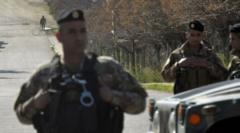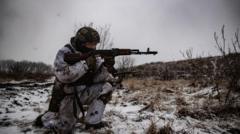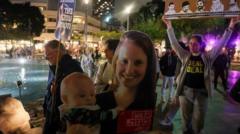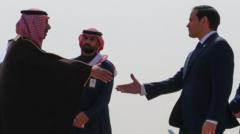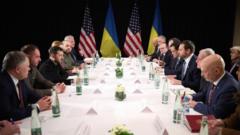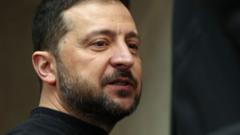A recent documentary highlights the experiences of children in Gaza as they cope with the ravages of war. Focusing on their daily struggles and the impact of violence on their education and mental health, the film reveals poignant stories of resilience amidst tragedy.
Children in Conflict: Gazan Youths Navigate Life Amid Chaos
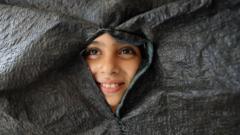
Children in Conflict: Gazan Youths Navigate Life Amid Chaos
A look into the lives of three children surviving the war in Gaza and the resilience they show in a time of unprecedented violence.
In Gaza, where the ongoing conflict between Israel and Hamas has transformed daily life into a grim struggle for survival, the resilience of children paints a harrowing yet powerful picture. The documentary "Gaza: How to Survive a Warzone," directed by Jamie Roberts and Yousef Hammash, sheds light on the lives of three children grappling with the realities of war, illustrating their struggles, aspirations, and some moments of joy amid chaos.
Eleven-year-old Zakaria embodies the stark contrast of childhood innocence disrupted by violence. He spends his days volunteering at al-Aqsa hospital, one of the few medical facilities still operational, amid an unrelenting influx of casualties. Zakaria's role consists of assisting paramedics in bringing in wounded victims. He recounts witnessing unimaginable horrors, including the death of a young boy in front of him following an Israeli airstrike. Despite his traumatic experiences, he yearns to be part of the paramedic team, donning a miniature set of scrubs provided by the hospital staff, yet he grapples with the loss of his childhood.
The documentary also follows Abdullah, a 13-year-old former student at British school in Gaza, as he clings to his education. Abdullah strives to continue learning despite the chaos surrounding him. With the school closures due to conflict, he radiates hope, determined to pursue knowledge in any way possible. On the other hand, ten-year-old Renad finds an outlet in cooking, creatively utilizing social media to share her culinary skills and bring a semblance of normality to her life. With over a million followers on TikTok, Renad's cooking show, created with her older sister, serves not just as entertainment but also a means to cope with food scarcity.
Rana, a 24-year-old mother, faces overwhelming challenges as a new parent in this tumultuous environment. Displaced multiple times and living in a makeshift tent, her story is intertwined with those of the children, highlighting the broader impact of war on families. The film illustrates how medical staff at al-Aqsa hospital tirelessly attempt to save lives, competing against time and resources in an environment riddled with danger.
Interestingly, the documentary was filmed without direct international journalists on the ground, as access to Gaza was heavily restricted during the conflict. Instead, local cameramen captured the daily struggles through messaging apps and mobile technologies, portraying an intimate glimpse into life under siege.
Amidst the wreckage of war, the children's experiences serve as a poignant reminder of resilience. Zakaria's aspiration to become a paramedic symbolizes hope for the future, while Abdullah and Renad's pursuit of education and creativity amidst the ruins embody the spirit of survival. As the film poignantly highlights, while war may physically entrap them, their dreams and determination refuse to be extinguished.




